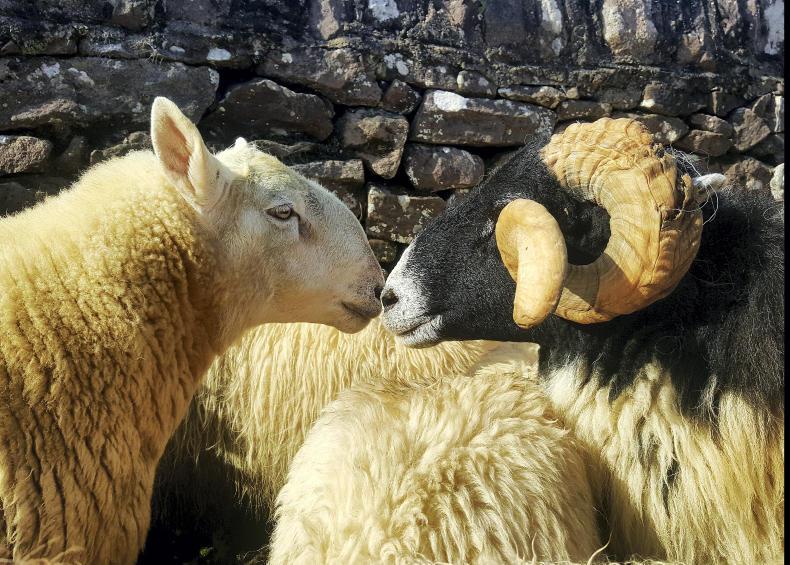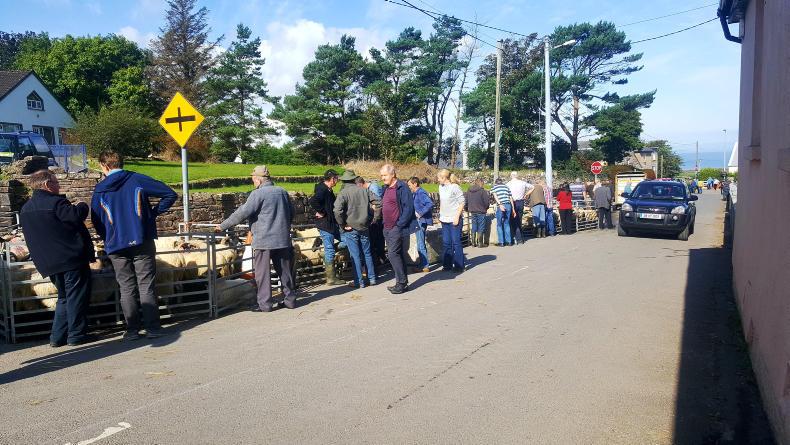Nestled between the Slieve Mish mountains and Tralee bay sits the village of Camp.
On 18 September every year, the crossroads in Camp is the venue for a traditional sheep fair which was first started by Lord Ventry in the 18th century and is reputed to be one of the oldest surviving sheep fairs in Ireland.
Listen to “Buying and selling sheep at Camp fair in Kerry” on Spreaker.
This year deals were struck and hands were shook as drivers passing between Tralee and Dingle were treated to old-time scenes of sheep penned in by the side of the road.
While the format of buying and selling may not have changed much over the centuries, you can be certain movement forms and tags weren’t part of the earlier fairs.

David Crean watches his father Jack Crean feeding his pet lamb Paddy.
Brigid O’Connor is one of the people who have helped keep the tradition alive and she was very happy with how the fair has continued, with numbers now growing again after a few challenging years.

Brigid O’Connor and Jack Crean enjoying Camp Fair.
“It’s harder to keep it going because there is no such thing as a full-time farmer around here anymore; nearly everyone is working off farm now,” she told the Irish Farmers Journal.
“It’s a big ask for younger farmers to take a day off, but they do.”
“Some of us kept bringing our sheep to Camp just to keep up the tradition and we had to make it more than just a sheep fair,” she continued.
“We now also have a sheep show and we have encouraged people to come along by including a programme of events around the fair, like the fancy dress, pet show and lots of other events in the evening.”

Jack the dog keeping an eye on proceedings at Camp sheep fair.
One man hoping to make €50 to €55 for his ewe lambs was 74-year-old John Kennedy. He remembers the fair at its peak.
“I’m coming here all my life. I was coming here when Camp fair was two days – the night before, there would be a small bit of buying done and the fair day was 18 September,” he recalled.
“There was a lot of people, a lot of buying here. It was an old established fair down through the years.”

Every year on 18 September farmers buy and sell their sheep at the crossroads.
Challenges for hill farming
While enjoying the occasion, local man Jimmy O’Dwyer was realistic in his appraisal of the hill farming sector and the challenges it faces.
If we weren’t getting what we are getting from Europe we’d be non-existent, we’d be gone, we’d be on the dole you know
“I suppose Camp Fair is my highlight of the year. I have 200 sheep there trying to sell them. Unfortunately, trade is very bad. No one wants our mountain lamb anymore. As a result, there’s no young farmers going after them either,” he said.

“It’s our living; well, if you could call it our living. You’d call it an existence now.
“Definitely, if we weren’t getting what we are getting from Europe we’d be non-existent, we’d be gone, we’d be on the dole you know. In a way it’s a pity.”
The figures tell their own story.
“Today I’m getting €42 a lamb. Thirty-six years ago I was getting £20 a lamb. I think that says it all.”

Deals were struck and hands were shook on the side of the road.
Industry Insight: Sharing the ‘light lamb’ problem
Ireland seeks geographical protection for Comeragh Mountain Lamb






 This is a subscriber-only article
This is a subscriber-only article





SHARING OPTIONS: